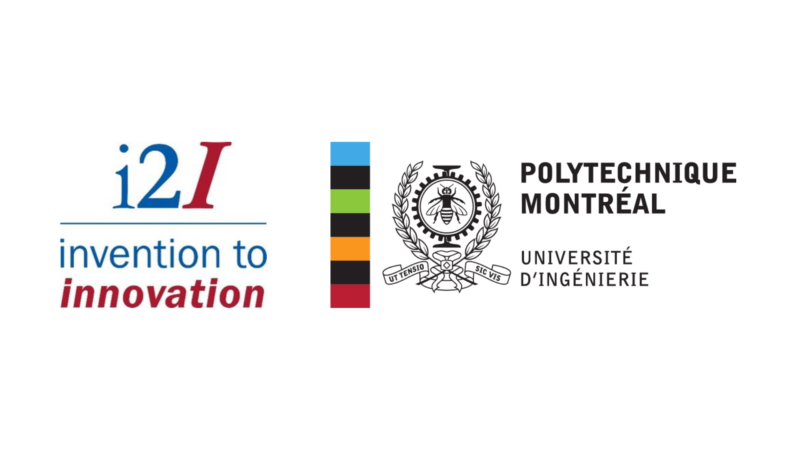i2I Program: An Interview with its founder Elicia Maine

Dre Elicia Maine

Dre Elicia Maine
by Nicolas Sacchetti

In 1995 she did the MIT Technology Policy program, a course and research-based master’s degree. Everybody there was in an area of engineering, policy, or management competency. “This program was definitely formative for me in my thinking and being in that ecosystem was inspiring. The people were trying, with a deep embeddedness in the technical capabilities, to understand and overcome challenges on the policy and innovation management side of new technologies,” shares Professor Maine.
She continues: “During my PhD, I was doing materials engineering and the innovation management around it. I was working with Professor Michael F. Ashby, an amazing individual. He had won all the awards you can win as a material engineer. He developed the methodology and then later the software, to help designers select between materials. It was called the Cambridge Materials Selector. He thought really big picture and I helped him to think about the investment point of view.”
At this point, the two academics were wondering why people were not investing in the novel materials developed in research labs: As scientists we think “we’ve discovered this fantastic novel material, can’t the government, the angel investors, or the venture capitalists see the huge potential here,” they were wondering.
“There’s a whole bunch of answers to that which I tried to address in my PhD theses. That brought me deeply into the innovation management literature. When I graduated, I could choose between being in a business school or an engineering school. I chose a wonderful business school – The Beedie School of Business at SFU – but from the very beginning I was teaching innovation management to engineers and scientists,” she tells. Her colleagues and the leadership team were open to that non-traditional path, and had already launched a Management of Technology MBA program.
“i2I is about when you take your specific invention, the attributes that you’re creating in the research lab, and you commercialize that in the world. But you have all these choices you can make early on. For example, you need to choose:
For Innovation and Entrepreneurship Professor Elicia Maine who has taught within the Beedie School of Business at the Simon Fraser University for more than twenty years, business is part of the creative process: “It's a mindset, a perspective of those scientists and engineers that you can teach,” she says.
Professor Elicia Maine recognized at an early age that Canadian science breakthroughs are underdeveloped and our scientists need support to translate discoveries into value-creating products and companies.
According to the Canadian Council for Academics, approximately three quarters of PhD graduates do not go on to tenure track academic jobs, while women, First Nations – Métis – and Inuit, visible minorities, first-generation students, and students with disabilities face additional challenges and time pressures during the course of their PhD.
The vast majority of these highly qualified personnel (HQP) are pursuing careers that do not fully utilize their advanced training. The founder of the i2I program, Professor Elicia Maine, has made it her life’s work to ensure that highly skilled Canadian inventors are set up for success in a receptive Canadian innovation ecosystem, and that their inventions are put to work solving important societal challenges.
Professor Maine was recently awarded the Innovation Policy Trailblazer Award at the 2022 Canadian Science Policy Conference (CSPC) for pioneering and growing the i2I program.
The Canadian Science Policy Center conference underlines: « Dr. Maine recognized key gaps in our Canadian science innovation ecosystem: Canadian STEM researchers being underutilized, Canadian science breakthroughs being underdeveloped and scientists needing additional support to translate discoveries into value-creating products and companies. This program nurtures a pipeline of talent within the wider Canadian innovation ecosystem and is recognized globally because of its distinct approach to unleashing the innovation potential of STEM researchers. »

“Innovation policy has been in my blood for a long time, and I consider my father to have been an innovation trailblazer since the mid 70s onward. I’m very honoured to be following in his footsteps.” Elicia Maine’s father, Dr. Frank Maine, served under Pierre Elliott Trudeau’s government in the 70s, including as Parliamentary Secretary for Science and Innovation.
Also, the politician was among other things an adjoint professor at Queen’s University, and a PhD chemist and inventor who started science-based companies. She remembers: “He involved me at a very early age. I was young when he was in parliament. My whole family would go up and watch part of the debates when we’d be out of school. That was certainly formative.”
One of Professor Maine’s mentors was Professor James M. Utterback at the MIT Sloan School of Management: “He said to look for commonalities instead of why your situation is unique. To try to find the highest levels where there are commonalities where you can abstract to a higher level for the type of contributions you’re making to the literature.”
She followed his advice and found the commonalities and the distinctions between this whole class of science-based business: “There are a lot of commonalities between biotech innovation and advanced materials innovation. Novel materials and processing often underlie biotech innovation. It is the same with nanotechnology, clean energy transition, quantum computing, or advanced manufacturing.”
She goes on: “There are a lot of commonalities in the challenges, opportunities, and approaches that you face to get breakthrough research out into the world as impactful innovations with social and economic value creation.”
The early days of laboratory research are critical. Professor Maine explains: “It’s the shaping of that science innovation while it’s still in the lab. Whether you’re in a large corporation, and you’re doing some sort of internal corporate venturing – which I studied – or if you’re in a university or government research lab, the period before you start adventure is critical.”
She and her team at SFU strive to share knowledge so that new inventors are not faced with what their predecessors wished for, which was to have the knowledge ten years earlier about simple things about the market: “We were finding that if people had been mentored in the lab of a prolific scientist and entrepreneur like Bob Langer at MIT, for example, if you happened to have had your graduate or postdoctoral training in that kind of lab, you took those capabilities with you. We believe that these were teachable and transferable. Once we’re finding that out of our studies, the obvious question was, if this program doesn’t exist why don’t we create it,” shares with me Professor Maine.
The National Science Foundation in the US, NSF Innovation’s Corps (I-Corps™️) program, founded by MIT Professor Subra Suresh, was also something Elicia Maine and her team analyzed before developing the i2I program: “The I-Corps™️ program is taking the concepts that they know about the market to try to link it to research.
She explains to me that they recruit scientists, who are asked to appoint somebody who is going to be the founder on the business side, and invite a third person who serves as a mentor. They get them as a team and they have them work through customer discovery together by conducting 100 interviews of potential customers.
In their analysis, Elicia Maine’s team found that the whole Lean Start-up methodology utilized in I-Corps was based on the experience that Steve Blank had in the computer industry in both hardware and software, but in lower-risk environments: “Pivots were very easy to do, and a minimal viable product was easy to create in software or in some types of computer hardware. That doesn’t seamlessly transfer over into developing a new therapeutic, quantum computing, or into deep tech solutions.”
She adds: “That customer discovery is great but having scientists jump directly to I-Corps™️ is also going to end up determining your founding team often before the scientists had a chance themselves to shape opportunity. It can also mean that the scientist is continually deferring to the business partners on the business questions. So what we felt is there’s something more needed in training scientists before they are sure they want to form a science-based company, and when they can still shape the science innovation opportunity. In fact, that innovation idea might not end up being a company at all, and that can still be a good outcome. It may end up being a productive collaboration with industry. It may end up being the next career trajectory for a prolific translational researcher.”
“So we designed a program that was very early stage. Our aim was to have three pathways. One of which was scalable science-based ventures, the Scientist-entrepreneur path, meant to help the ecosystem and those HQPs benefit along the rest of their career.”
The two other paths are the Champions of innovation, meant to “increase science-based innovation in Industry,” and the Translational scientist/knowledge mobilization, meant to “increase meaningful translational research in academia.”
We’re not fishing for them. And they’re doing it critically with their own research. Every single module and concepts are applied specifically to the research and the innovation idea that individual scientists or engineers have, and we count on the cohorts to actually help each other and to give feedback to each other.”
The reason i2I does not accept undergrad is because they want original research from the university to be feeding these innovation ideas: “That experience is unusual for undergraduate students to have. It happens and we have allowed I think two undergrads into the program but only ones that had be embedded in a research lab and were developing a research-based innovation,” answer Professor Maine.
Being surrounded by inventors, I asked Professor Elicia Maine if she invented something. Her answer, she invented the i2I Program. Which is a great accomplishment that STEM inventors- entrepreneurs across the country can now benefit.
If you’re a STEM grad researcher and want to learn more, you can visit the Mitacs Invention to Innovation (i2I) Skills Training website.
STEMs at Polytechnique Montréal to gain award winning Mitacs i2I Skills Training ProgramCe contenu a été mis à jour le 2023-03-30 à 14 h 40 min.